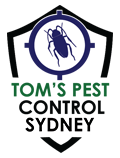An attack by wasps can cause severe pain and allergic shock. Although a homeowner may be confident in their ability to remove wasp eggs, they must use suitable materials and safety gear.
Giant solitary bees live near water sources, where they can find us. They build cells out of the clay and then fill them with a spider, paralysed bug, or egg. The larva consumes the bug and then becomes an adult. These mud chambers can be found on walls and ceilings in protected areas.
Spraying residual pesticides with a label from the wasps can be done on nearby surfaces and mud nests. However, the mud nest must be completely submerged to ensure that pesticides reach the larvae within the mud cell. Tom’s Pest Control Sydney offers guaranteed wasp removal.







